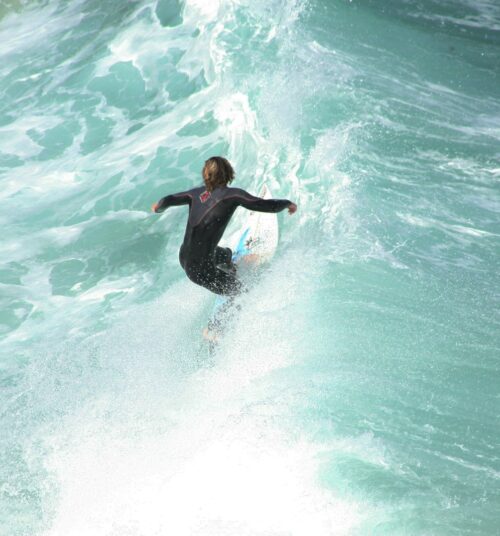Buying Your First Surfboard
You are now a surfer and ready to buy your very first surfboard.
Buying Your First Surfboard: A Journey into Surfing
Embarking on the journey of buying your first surfboard is an exciting milestone in a surfer’s life, marking the transition from a beachgoer to a true water enthusiast. The process involves much more than simply picking out a board; it is a blend of understanding surfboard types, considering personal needs and goals, and delving into the nuances of board materials and design. This essay explores the essential factors to consider when purchasing your first surfboard, including board types, sizing, and practical considerations, to help you make an informed and satisfying choice.
Understanding Surfboard Types
The world of surfboards is diverse, with various types designed to cater to different skill levels, wave conditions, and surfing styles. For beginners, the most common types are soft-top boards, foam boards, and longboards. Soft-top boards, often referred to as “foamies,” are ideal for novices due to their buoyant, forgiving nature. The soft top provides additional safety, reducing the risk of injury during falls and collisions. These boards offer excellent stability, making them perfect for learning balance and basic paddling techniques.
Longboards
Longboards are another excellent option for beginners. Ranging from 8 to 9 feet in length, longboards are known for their stability and ease of paddling. They allow for a more relaxed style of surfing, ideal for catching small to medium waves and improving fundamental skills. Their length and shape provide ample time to practice standing up and maintaining balance on
the board.
Board Sizing and Volume
When selecting a surfboard, size and volume play critical roles in performance and comfort. For beginners, a larger board with more volume is generally recommended. Volume, which is a measure of a board's buoyancy, affects how easily the board floats and paddles. A board with more volume is easier to float on, making it simpler to catch waves and maintain balance. Typically, a board that is 8 to 9 feet long, 22 to 24 inches wide, and has a thickness of around 3 inches is ideal for beginners. The dimensions of a board should be matched to the surfer's weight and height. For instance, a larger person may require a longer and wider board compared to a smaller individual. It’s important to consider the board’s weight capacity and ensure that it provides adequate flotation for the rider. Consulting a surf shop expert or using an online board size calculator can
provide additional guidance tailored to your specific needs.

MATERIALS AND DESIGN
Surfboards are made from various materials, each offering different benefits. Foam boards are typically made from a foam core with a soft, textured outer layer. They are lightweight, durable, and less expensive, making them an ideal choice for beginners.
FIBERGLASS BOARDS
On the other hand, fiberglass boards, which have a foam core encased in a fiberglass and resin shell, are more durable and offer better performance. These boards are often preferred by more experienced surfers due to their responsiveness and speed but can be more fragile and expensive.
DESIGN AND PERFORMANCE
The design of the surfboard also impacts its performance. A board with a wider nose and tail provides more stability, while a narrower outline allows for greater maneuverability. The rocker, or the curve of the board from nose to tail, influences how easily the board can handle different
types of waves. Boards with more rocker are better suited for steeper, more powerful waves, whereas boards with less rocker perform well in flatter, less aggressive conditions.

PRACTICAL CONSIDERATIONS
When purchasing a surfboard, practical considerations such as budget, storage, and maintenance should also be taken into account. Surfboards can range significantly in price, from budget-friendly foam boards to high-end custom fiberglass models. For beginners, it’s often best to start with a more affordable option and invest in a higher-quality board as skills progress. Storage and transportation are additional factors to consider. surfboards are relatively fragile and can be easily damaged if not properly stored. Investing in a board bag or cover can protect your surfboard from dings, UV damage, and other hazards. Additionally, ensure you have a suitable vehicle or means of transporting the board to and from the beach.
Conclusions
Buying your first surfboard is a significant step in your surfing journey, requiring careful consideration of various factors to ensure you make the right choice. By understanding the different types of surfboards, considering board size and volume, and evaluating materials and design, you can select a board that aligns with your skill level, surfing goals, and personal preferences. Additionally, taking practical considerations into account, such as budget and storage, will enhance your overall surfing experience. Ultimately, the right surfboard will provide the foundation for many exciting and fulfilling waves to come, making your entry into the world of surfing both enjoyable and memorable.

Contact Us on WhatsApp to book your next Nusa Lembongan Trip

